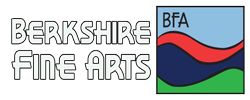The Dao of Push Hands
Cultivating Suppleness and Wisdom
By: Cheng Tong - Jul 15, 2025
In the vast and profound landscape of Taijiquan, few practices encapsulate its deepest principles as directly and dynamically as “push hands” (Tui Shou). Far more than a mere physical exercise or a competitive bout, push hands is a moving meditation, a dialogue of energies, and a profound practical application of Daoist philosophy. It is here, in the intimate interplay with a partner, that one truly begins to understand the essence of suppleness, the subtle language of qi, and the profound wisdom of yielding rather than resisting.
At its core, push hands is a two-person training drill designed to develop sensitivity, balance, and the ability to neutralize and issue force. Partners maintain continuous contact, typically at the wrists or forearms, and engage in a gentle yet focused exchange. The objective is not to overpower through brute strength, but to sense the opponent’s intentions, find their imbalances, and gently guide them off-center, or to empty their structure, creating an opening for a yielding or issuing movement. This continuous contact provides immediate feedback, allowing practitioners to refine their internal connections, improve their root, and enhance their proprioception – the body’s awareness of its position and movement.
Central to effective push hands, and indeed to all Taiji, is the cultivation of suppleness and flexibility. This isn’t merely about physical limberness, but a deep, internal pliancy that allows one to adapt instantly to an opponent’s incoming force. The Daoist sage Laozi, in the Tao Te Ching, eloquently states, “The soft and weak overcome the hard and strong.” This profound truth is the very cornerstone of push hands. When we are soft, our structure is alive and responsive, like a tree swaying in the wind rather than a rigid oak that snaps. This suppleness enables us to “listen” to our partner’s energy – to sense their qi. In Daoist thought, qi is the vital life force, the animating energy of the universe. In push hands, it manifests as the subtle pressure, direction, and intention of your partner’s movement. By remaining relaxed and yielding, your own qi flows freely, allowing you to perceive and respond to your partner’s qi without obstruction. This acute sensitivity, often referred to as “listening energy” (ting jing), is developed through countless hours of maintaining light, responsive contact, allowing information to flow through your connected points. Once sensed, this qi can then be harmonized with, redirected, or absorbed and returned, much like water adapting its form to any container.
Perhaps the greatest lesson push hands offers is the imperative to resist the instinct to meet force with force. This deeply ingrained human tendency, often a reflex born of fear or aggression, is antithetical to Taiji’s principles. When an opponent pushes, the untrained response is often to push back harder, resulting in a futile clash of strength. Push hands meticulously trains us out of this habit. Instead, we learn to “yield” or “neutralize” – to absorb the incoming force, redirect it along a tangent, or allow it to pass through us without engaging in a head-on collision. This is the embodiment of wu wei, the Daoist concept of “non-action” or “effortless action.” It does not mean doing nothing, but rather acting in perfect harmony with the natural flow, without forcing or contending. By not resisting, you do not meet the opponent’s strength, thus leaving them with nothing solid to push against. As the Tao Te Ching also says, “The best of men is like water, which nourishes all things without contending.” Water flows around obstacles, finds the path of least resistance, and given time, can wear away the hardest stone. Similarly, in push hands, suppleness and yielding are far more potent than rigid opposition.
This practice transforms not only our physical responses but also our mental and spiritual outlook. The constant cultivation of yielding and sensing fosters a calm, centered mind. It teaches us about the interplay of yin (yielding, soft, empty) and yang (issuing, hard, full) – how one cannot exist without the other, and how they constantly transform into each other. When an opponent is yang (applying force), we become yin (yielding); when they become yin (empty), we can become yang (issue force). This dynamic balance reflects the cosmic harmony depicted in the Daoist symbol.
Push hands Taiji is a profound journey into applied Daoist philosophy. It is a crucible where the wisdom of suppleness, the sensitivity to qi, and the power of non-contention are forged. By diligently practicing to listen, to yield, and to flow like water, we not only become more adept at the physical art but also cultivate a deeper understanding of ourselves and our place within the natural harmony of the Dao. It teaches us that true strength lies not in brute force, but in adaptable wisdom, and that sometimes, the most powerful action is no action at all.
